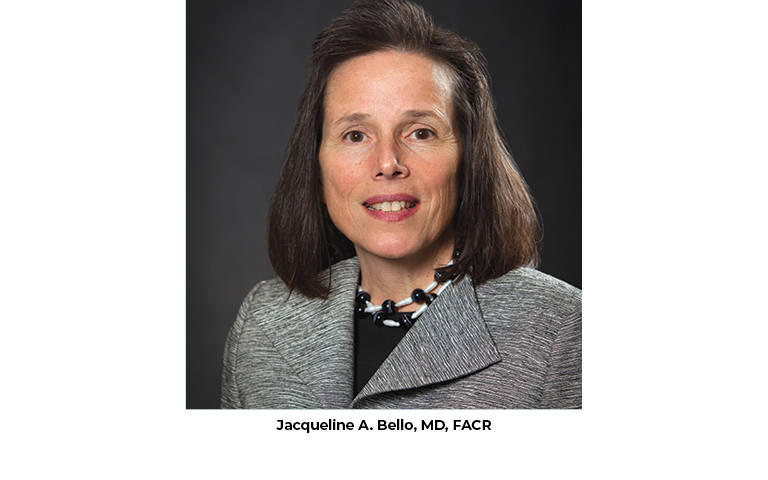“Make sure your own oxygen mask is secure before helping others.”1 How many times have we heard this safety announcement before the airplane takes off?
There is an ancient Latin proverb, Medice, cura te ipsum. “Physician, heal thyself.” It provides similar sound advice, targeted to our profession long before air travel existed.2 The basic message is essential to everyday survival, not just to unexpected/emergent situations.
The WHO differentiates personal wellness from health as it involves “fulfilment and realization of that person, both as an individual and their perceived role in their social circles — physically, psychologically, socially, spiritually, and economically.”3 Interwoven, the many facets comprising wellness constitute our unique fabric and vulnerability as individuals.
Wellness Issues: Pre-Pandemic (Standard Cruising Altitude Just Above 30,000 Feet)
Prior to the COVID-19 pandemic, the ACR 2018 Intersociety Conference focused on wellness, with the stated purpose “to identify strategies and themes to mitigate the frequency, manifestations, and impact of stress.” The subsequent publication in the JACR®, “A Road Map to Foster Wellness and Engagement in Our Workplace,” cited factors that exacerbate existing stressors within radiology’s workspace such as isolation, workload, workflow inefficiency, misaligned purpose between altruistic individuals and the large systems in which they work, malpractice risk, lack of autonomy over schedules, economic demands in the setting of regulatory/reimbursement challenges, and generational issues.4 Strategies suggested to address stress included reducing stigma surrounding burnout; minimizing isolation; measuring and analyzing outcomes of improvement efforts; establishing and empowering wellness committees; recognizing positive impacts of team members; and improving efficiency in the workspace. The four themes identified for operational prioritization were as follows:
- Collecting, analyzing, and benchmarking data
- Developing effective leadership
- Building high-functioning teams
- Amplifying voices to increase influence4
In a pre-pandemic Association of Program Directors in Radiology survey of radiology residency training programs two-thirds of responding programs rated their knowledge of the Accreditation Council for Graduate Medical Education Common Program Requirements regarding well-being as incomplete; roughly three-fourths had not implemented a comprehensive wellness curriculum; and over half of the responding programs did not offer the mandated self-screening tool for well-being. At the time, over two-thirds of programs had not minimized non-physician responsibilities for residents.5
Wellness Issues: Pandemic-Related/Exacerbated (In-Flight Turbulence)
The processes and procedures employed in combating COVID-19 have managed to unsettle individuals with otherwise intact personal wellness. The excessive work schedules and low levels of personal interaction that contributed to the pre-pandemic burnout experienced by radiologists have only been exacerbated by the pandemic’s effect on increasing social isolation and higher demands on healthcare workers in a time of workforce shortages.
An increase in population-wide mental stress has been documented in previous endemics and pandemics. This is intensified in healthcare workers who bear the additional burden of frontline exposure and the primary responsibility of fighting the pandemic.6 It is difficult to maintain personal wellness while prioritizing patient care and attempting to meet increased demands. Challenges imposed by viral variants; inadequate supply chain; uneven distribution of PPE, vaccines, and testing; and frequent changes in rulemaking create landmines in the wellness landscape. Uncertainty hinders the ability to plan, and lack of overall control destabilizes functional teams. Frequent interruptions for overworked personnel result in burnout and overlooked mistakes.7 Among U.S. physicians, the death rate by suicide is higher than the general population. Annually, 300–400 physicians die by suicide. Despite this high prevalence, mental illness and lack of personal wellness among physicians and healthcare workers remain under-recognized.8
President Biden signed the Dr. Lorna Breen Health Care Provider Protection Act (H.R. 1667) into law on March 18, 2022. The ACR Commission on Government Relations prioritized support for this bipartisan legislation named for an emergency medicine physician who died of suicide in April 2020. ACR members played an important role in advocating for the Breen Bill as a legislative priority during Hill Day 2021. The legislation will fund training of healthcare providers, residents, and students on evidenced-based model strategies to reduce burnout, mental health conditions, and suicide. It also provides grants for education, peer-support programming, and treatment for mental and behavioral health conditions among healthcare providers. Furthermore, the legislation calls for the development of national awareness campaigns and studies of burnout among healthcare providers, with particular attention to the impacts of the COVID-19 pandemic.

